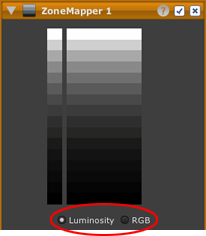

- #Which lightzone amd64 vs x86 software#
- #Which lightzone amd64 vs x86 Pc#
- #Which lightzone amd64 vs x86 mac#
But it's important to remember that only four of the M1's eight cores are the Firestorm high-performance version. Just for fun, we limited the Ryzen 9 5950X to eight threads only and added it to the mix-even with only eight cores active, the 5950X easily dominates here. Although there are criticisms that Cinebench-which uses Maxon's graphics rendering software-is narrowly focused, we find that it both accentuates differences between CPUs and hews more closely to both real-world expectations and the Passmark general-purpose benchmark than Geekbench does.Īpple's M1 comes out firmly on top of both the quad-core/octa-thread i7-1185G7 and octa-core/octa-thread Ryzen 7 4700U in unlimited multicore testing. Updated 4:05pm EST: Cinebench's new R23 release offers native ARM on macOS support, and we generally prefer it to Geekbench. Within Geekbench's limited world, it's clear that the M1 is a winner-it beats all comers, whether we're looking at multithreaded CPU, single-threaded CPU, or OpenCL GPU testing.
#Which lightzone amd64 vs x86 software#
And because Metal is the API Apple's devices and software are optimized for, we don't normally use its OpenCL-based GPU test at all.īut since we're looking at a brand-new architecture on a minority platform, before its retail launch, we're very limited on shiny, pre-packaged benchmark suites. It can flatten most differences in CPUs, while occasionally and unpredictably magnifying others. Geekbench is not the entire picture, of course. Geekbench 5.3.0 is one happy exception to that rule, with a brand-new version running natively on Apple Silicon macOS and in the App Store already. Unfortunately, not all benchmark suites run on macOS, very few run on Apple Silicon, and very little along those lines runs on macOS 11 on Apple Silicon. It's very frustrating trying to get a direct performance comparison between the M1 and its x86-64 competition-in our device reviews, we normally lean pretty heavily on general-purpose, synthetic benchmark suites that run a wide array of tests against a platform and come up with a simple numeric score.
#Which lightzone amd64 vs x86 Pc#
The M1 is designed from the ground up to be powerful and rather compromise-free competition for traditional PC architecture.

But ARM has been coming for the desktop space as well, albeit more slowly-and mostly on the very low end, as we've seen in devices such as the Pinebook Pro.Īpple's new M1 system-on-a-chip (SoC) is decidedly not one of those low-performance, low-cost efforts. In these form factors, performance-and the ability to run a familiar operating system and software stack, with zero compromise-has been the most important criterion. From there, ARM began encroaching on the datacenter, and for the same reasons-even though individual ARM processors generally underperformed their x86 equivalents, they got the same amount of work done with lower power and cooling bills necessary.ĭesktop and traditional laptop PCs are something of a last bastion for the x86-64 architecture. That power efficiency advantage led ARM to an early and crushing victory in the ultramobile space-phones and tablets-where milliwatts saved matter more than raw performance. Getting down and nerdy-pigz parallel compressionĪRM architecture generally has a substantial power-efficiency advantage over x86-64-the architecture underlying traditional Windows, Linux, and macOS machines.Similarly, you can beat the M1's GPU with high-end Nvidia or Radeon desktop cards-but only at a massive disparity in power, physical size, and heat. Although it's extremely difficult to get accurate Apples-to-non-Apples benchmarks on this new architecture, I feel confident in saying that this truly is a world-leading design-you can get faster raw CPU performance, but only on power-is-no-object desktop or server CPUs.
#Which lightzone amd64 vs x86 mac#
In addition to the eight CPU cores, the version of the M1 in the Mac mini has eight GPU cores, with a total of 128 Execution Units. The idea is that user-focused foreground tasks, which demand low latency, will be run on the performance cores-but less latency-sensitive background tasks can run slower and lower on the four less-powerful but less power-consumptive efficiency cores. The M1's CPU is a 5nm octa-core big/little design, with four performance cores and four efficiency cores. Instead, we're going to take a closer look at the raw performance of the new M1 in comparison to more traditional x86 systems.

This is not one of those reviews-though reviews are coming imminently for some of the new Macs. And we've got traditional reviews of those devices and their ecosystems, for Apple fans and the Apple-curious. Further Reading macOS 11.0 Big Sur: The Ars Technica review Original story 9:00am EST: There's a lot of understandable excitement around Apple's ARM-powered devices right now.


 0 kommentar(er)
0 kommentar(er)
